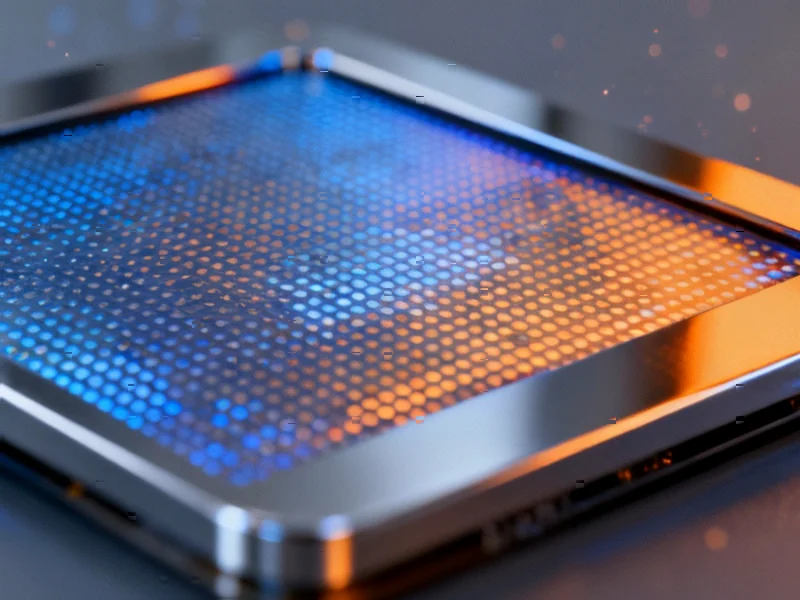The Resolution Revolution in Micro-Optics
In a groundbreaking development that challenges fundamental assumptions about display technology, researchers from three Swedish universities have created what might be the most significant advancement in micro-displays since the invention of the pixel itself. This innovation comes not through incremental improvements to existing technology, but through a complete reimagining of how we create images at microscopic scales.
Table of Contents
The team from Chalmers University of Technology, University of Gothenburg, and Uppsala University has developed a screen approximately the size of a human pupil that achieves what was previously thought impossible: a resolution so high that the human eye cannot distinguish it from reality. This breakthrough could transform industries ranging from virtual reality to medical imaging and beyond.
The Fundamental Limitation of Traditional Pixels
For decades, display technology has followed a predictable path of shrinking pixels while increasing their density. However, as screens move closer to the human eye—as in VR headsets and augmented reality glasses—this approach hits a physical wall. Traditional pixels, particularly in micro-LED displays, begin to fail when they shrink below one micrometer in width. At these microscopic scales, issues like color bleeding, uneven illumination, and reduced brightness become insurmountable obstacles.
“The problem isn’t just making pixels smaller—it’s that the physics of light and materials change at these scales,” explains the research team. Conventional pixels require individual light sources and precise control mechanisms that simply don’t function effectively when reduced beyond certain dimensions.
Metapixels: A Paradigm Shift in Display Technology
Rather than fighting the limitations of traditional pixels, the Swedish research team developed an entirely new approach they call “metapixels.” These aren’t pixels in the conventional sense but rather microscopic structures made from tungsten oxide—a material with remarkable properties that allow it to switch between being an insulator and a metal based on electrical stimulation.
The metapixels function through structural color rather than emitted light, much like the natural mechanism found in bird feathers or butterfly wings. “The beauty of this approach is that we’re not creating light—we’re manipulating how existing light interacts with these structures,” says Professor Andreas Dahlin from Chalmers University. “This eliminates the fundamental problems that plague traditional micro-displays.”, as covered previously, according to industry analysis
Technical Specifications and Capabilities
The team’s prototype demonstrates staggering technical achievements:
- Pixel density exceeding 25,000 PPI—far beyond any commercially available display
- Individual metapixels measuring approximately 560 nanometers wide
- Screen dimensions of just 1.4 x 1.9 mm (1/4000th the size of a standard smartphone screen)
- Energy-efficient operation through reflective technology
- No requirement for backlighting or individual light sources
Perhaps most impressively, the resolution achieved matches the maximum perceivable by the human eye. “Each metapixel corresponds roughly to a single photoreceptor in the retina,” explains Professor Dahlin. “This means we’ve reached the absolute limit of what humans can visually distinguish.”
Demonstration and Practical Applications
To showcase their technology’s capabilities, the researchers reproduced Gustav Klimt’s famous painting “The Kiss” on their microscopic display. The reproduction maintained perfect clarity and detail despite the incredibly small canvas, proving the technology’s practical viability.
The implications extend far beyond artistic demonstrations. Kunli Xiong from Uppsala University, who conceived the project and led the research, notes: “This technology opens new dimensions in how we interact with information and our environment. We’re looking at transformative applications in medical visualization, scientific research, remote collaboration, and of course, truly immersive virtual reality.”
The Future of Retina E-Paper Technology
While the technology shows immense promise, the researchers acknowledge that further refinement is necessary before commercial deployment. The team is currently working on improving color range, response times, and manufacturing scalability.
Giovanni Volpe from the University of Gothenburg emphasizes the long-term significance: “We’re not just improving existing technology—we’re establishing a completely new platform for visual displays. As we refine this technology, we believe retina e-paper will become foundational to next-generation visual interfaces.”
The research represents more than just another incremental improvement in display technology. It demonstrates that by rethinking fundamental assumptions and looking to nature for inspiration, we can overcome limitations that once seemed insurmountable. As this technology develops, it may well make the distinction between digital displays and physical reality indistinguishable to human perception.
For those interested in the technical details of this breakthrough, the original research announcement provides additional scientific context and methodology.
Related Articles You May Find Interesting
- Advanced TRISO Fuel Technology Poised to Revolutionize Nuclear Safety and Econom
- Revolutionizing Glioma Diagnosis: How AI Overcomes Imperfect MRI Data Challenges
- Lenovo’s IdeaPad 1i Bundle: When Hardware Becomes the Free Bonus to Premium Soft
- Researchers Develop AI-Powered Method to Improve Irrigation Efficiency
- Overcoming CAR T Cell Limitations: Membrane-Tethered SLP-76 Enhances Cancer Immu
References
This article aggregates information from publicly available sources. All trademarks and copyrights belong to their respective owners.
Note: Featured image is for illustrative purposes only and does not represent any specific product, service, or entity mentioned in this article.



